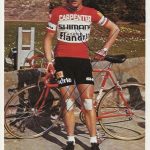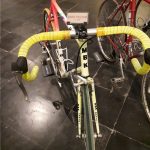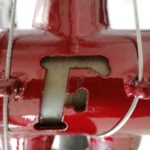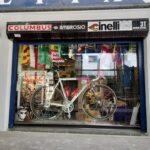When we talk about the bicycles Eddy Merckx achieved his successes with, we invariably see the image of the orange bicycles that the Molteni team rode and on which the cannibal rode most years of his wonderful career.
Still, like practically all riders, Merckx still rode other bikes. Although his name was always on the frame, those bicycles were not yet made in the Merckx factory, this was only from 1980, after his career. (More info on the Eddy Merckx racing bicycles)
In his career his bikes were made by Superia, Peugeot, Masi, Vaneenooghe, Terryn, Kessels, De Rosa, Colnago
A summary
Superia racing bike
Merckx achieved his first major victory in 1964 at the World Championship of Sallanches on a blue Superia bicycle, then the bikes of the Solo Superia team where Rik Van Looy was the leader. Merckx only stayed there for 1 year, in his own words because of the bad relationship with Rik II.
The Superia brand was created after a persistent quarrel between the brothers Remi and Aimé Claeys in 1956, when both headed the well-known bicycle and moped brand Flandria. The dispute led to the factory in Zedelgem being divided in 2 by means of a wall. Flandria bicycles were made in one part and Superia bicycles in the other part.
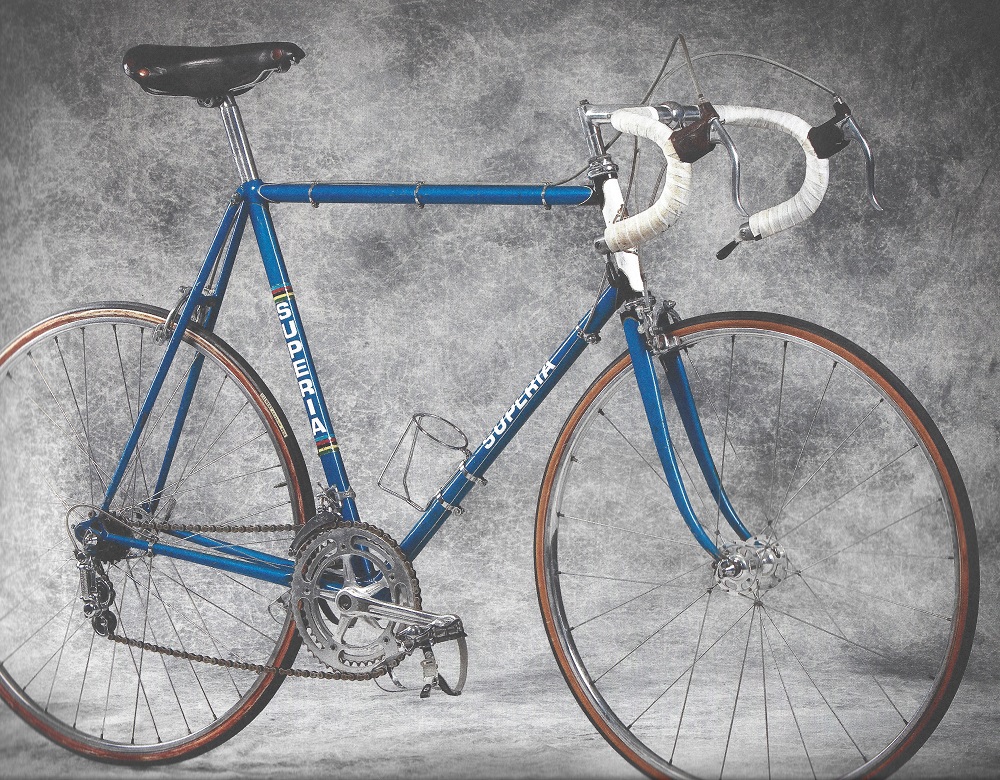
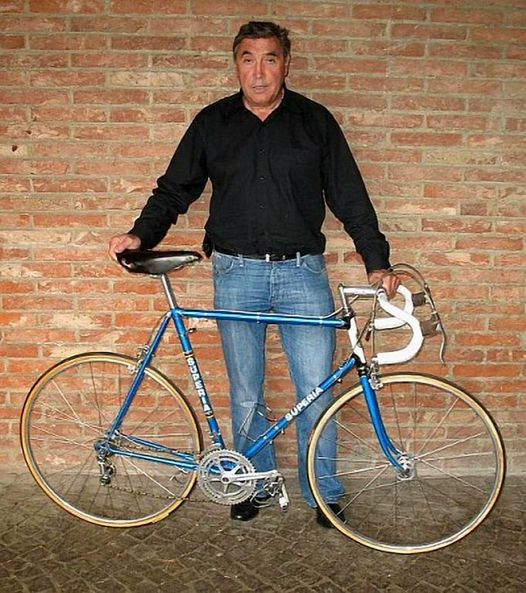
The Superia bike with which Eddy Merckx became amateur world champion is equipped with a Campagnolo Gran Sport group, where it is striking that the shifters are not on the down tube but on the end of the handlebars, as was usual in cyclocross.
The rear wheel has 5 crowns and the front gears are a 53 - 45, the handlebars and stem are from the Italian Ambrosio as well as the Universal brakes. The saddle is from the English Brooks.
Another thing about this bike is the remarkable weight: 11.4 kg if you know that today's racing bikes only weigh 6.8 kg.
Faema racing bike (Giuseppe Pelà)
After his period at the French Peugeot, Eddy Merckx switched to the Italian Faema where he rode the typical white - red frames. From then on, his name, along with a decal of his face, was on the frame. The frames were made by various frame builders such as the Italian Giuseppe Pelà and the Belgian Marcel van der Este.
The bike below from 1970 is equipped with a full Campagnolo Nuovo Record group. New to this group was that the brake levers and levers in addition to the seatpost were now all Campagnolo. 6 crowns have already been mounted at the back and a 53 – 52 crankset has been drilled out at the front to save as much weight as possible (more about drilling out components can be found here).
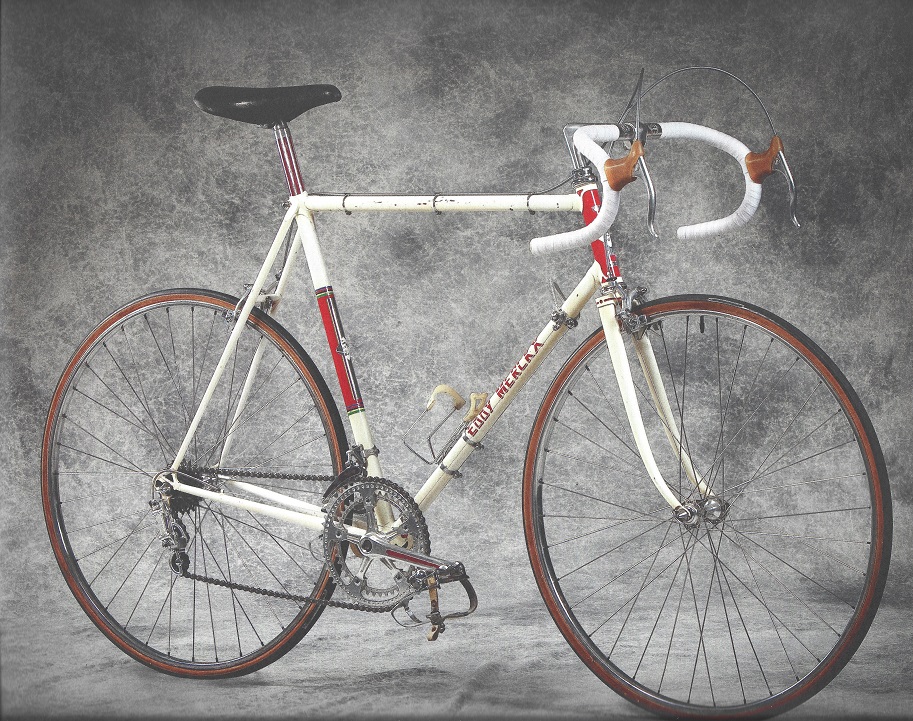
It was on this bike that Merckx smashed his opponents in the mountain stage from Gap to the top of Mont Ventoux in the 1970 Tour de France.
Molteni racing bike (Ugo De Rosa)
From 1972 to 1976 Eddy Merckx rode for the Italian Molteni for which Erneste Colnago, Ugo De Rosa and Kessels (Vaneenooghe) made the most bicycles.
Typical for the bicycles from this period is the orange color with blue decals with the name Eddy Merckx in yellow.
The 1976 bike pictured below was built by Ugo De Rosa, as can be seen by the engravings on the lugs at the bottom.
The bike is equipped with the new Campagnolo Super Record group, then the best group of Campagnolo.
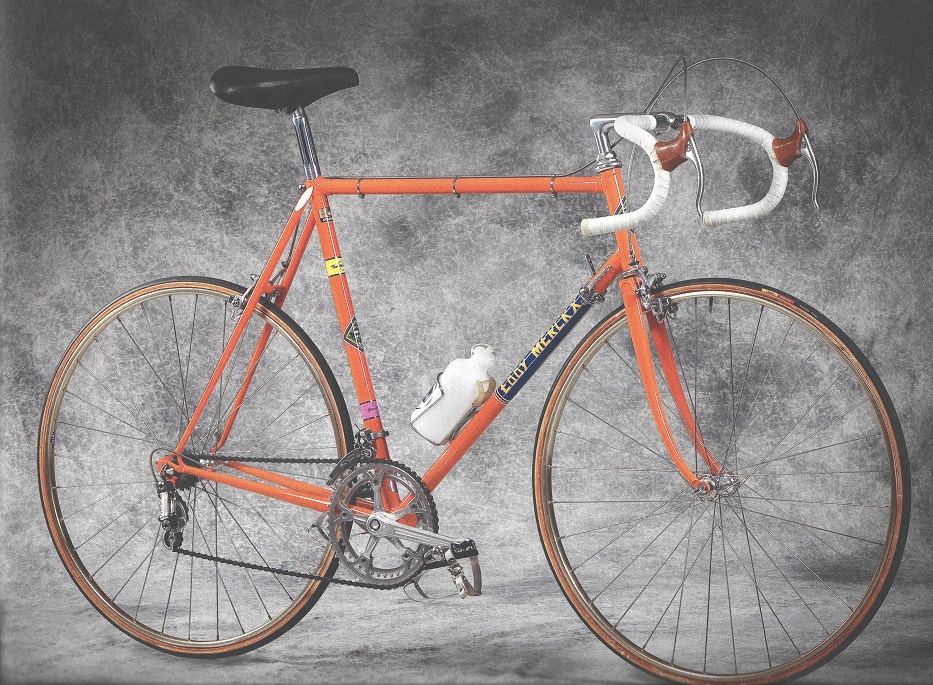
Summary framebuilders
Finally, below you will find an overview of all frame builders Eddy Merckx has worked with during his career
1964 – Superia
1965 – Superia
1966 – Peugeot
1967 – Peugeot en Masi
1968 – Masi
1969 – Marcel Van der Este (???????)
1970 – Pela – Torino, Italy
1971 – Colnago en Kessels
1972 – Colnago en Kessels
1973 – Colnago en Kessels
1974 – De Rosa en Kessels
1975 – De Rosa en Kessels
1976 – De Rosa en Kessels
1977 – De Rosa

